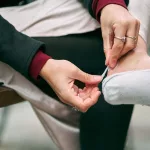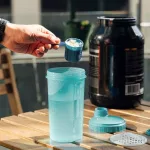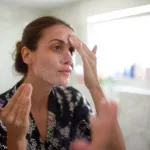You might wish your child would stay little forever, but children mature quickly. Before you know it they’re off to kindergarten, mastering a bicycle, and then entering puberty. The age at which kids begin puberty varies — many girls start between about 9 and 13 years, and many boys begin between roughly 10 and 15, according to experts. Puberty brings obvious bodily changes: children get taller, girls’ breasts develop, and boys’ voices may deepen. It’s also the time when body hair starts appearing.
As underarm hair appears, you may detect a noticeable smell from your child. Most parents expect their child to need deodorant by the teen years, but some kids develop noticeable body odor earlier. It’s not unusual for parents or children to consider deodorant as early as 8, 9, or 10 years old.
You might feel your child is too young for deodorant, but there’s no exact age when a child must begin using it. This choice is best made by parents and children together, based on what feels right for them.
:max_bytes(150000):strip_icc()/prt-secret-aluminum-free-whole-body-deodorant-stick-14-3836ef026d234f01b30fa7b973ee172f.jpeg)
Deodorant vs. antiperspirant
If you and your child decide to address underarm odor, you can pick either an antiperspirant or a deodorant. People often use these words interchangeably, but they are different products. An antiperspirant reduces sweating, while a deodorant neutralizes the smell produced by sweat. Some items work as both, but not all do.
Because sweating is frequently the root of body odor, you might be inclined to select a product that limits perspiration. Although antiperspirants can work well, some people worry about possible adverse effects from certain ingredients in these formulas.
Side effects of antiperspirants
Look at the labels on antiperspirants in your bathroom or store shelves and you’ll often see aluminum chloride or aluminum zirconium listed. These compounds act like a plug, narrowing and blocking sweat glands. With daily use, a child may stop sweating entirely or only perspire minimally.
Adult antiperspirants are generally usable by children and teens — brands such as Certain Dri, Old Spice, Secret, and many others are widely available.
While aluminum-containing antiperspirants are effective at reducing sweat, some suggest that aluminum and other agents in these products (like parabens and propylene glycol) could be linked to higher risks for certain health problems. However, studies have not proven that applying these substances to the skin increases disease risk.
If you’re uneasy about these ingredients, you can forgo antiperspirants and pick a mild deodorant for your child or teen instead.
Safe, gentle deodorants for kids
If you want to mask your child’s underarm odor without aluminum, parabens, or similar additives, there are several natural deodorants made for kids. Some options include:
- Primal Pit Paste
- Tom’s of Maine
- Junior Varsity Natural
- Truly’s
- Crystal Spring Salt of the Earth
- Fresh Kidz
Because deodorants don’t include ingredients that block sweat glands, they only manage odor, not perspiration. Fortunately, younger children generally don’t perspire heavily. Children react differently to natural products — if a natural deodorant doesn’t give immediate results, allow several days for the body to adapt. If there’s no improvement, try a different natural formula.
Natural deodorants are typically safe, but your child could be allergic to one or more components. In fact, a child may be sensitive to an ingredient in a natural deodorant just as they might be to one in an antiperspirant. Before applying any product broadly to underarms, consider patch-testing a small area, such as the back of the hand. Watch for redness, bumps, or itching. If no reaction appears, it’s likely okay to use on a larger area under the arms.
Do-it-yourself deodorant
If you’d rather avoid commercial antiperspirant or deodorant ingredients, you can craft a homemade deodorant using items like coconut oil, baking soda, and essential oils. Many straightforward recipes are available online.
A simple recipe might include mixing:
- 1/4 cup of baking soda
- 1/4 cup of arrowroot powder
- 4 tbsp. of coconut oil
- 1/4 tsp. of an essential oil such as tea tree or lavender
Combine the ingredients, melt the mixture, then pour it into an empty deodorant stick or another container.
Because essential oils and other natural substances are not tightly regulated, assessing the safety or effectiveness of any single product can be difficult. While no definitive links exist between essential oils and hormonal disruption, research continues. In this recipe, any pleasant-scented oil can replace tea tree or lavender — its main job is to mask body odor and smell preferable to sweat.
Homemade and natural deodorants tend to be gentle and may not be as potent as some commercial options. To manage odor throughout the day, children may need to reapply after exercise or on hot days.
Children can also reduce body odor by bathing daily, showering after activities, and changing clothes, socks, and underwear each day.
Takeaway
Body odor is common among children and teens, especially during puberty, and typically isn’t a cause for concern. Talk to your pediatrician if your child’s smell doesn’t get better or grows worse despite using an antiperspirant or deodorant and improving hygiene.
Sometimes excess perspiration or persistent odor is due to another condition. In uncommon cases, a doctor may recommend tests to determine whether the smell is a normal part of growing up or related to issues such as an infection, diabetes, or an overactive thyroid.


















Leave a Reply
You must be logged in to post a comment.